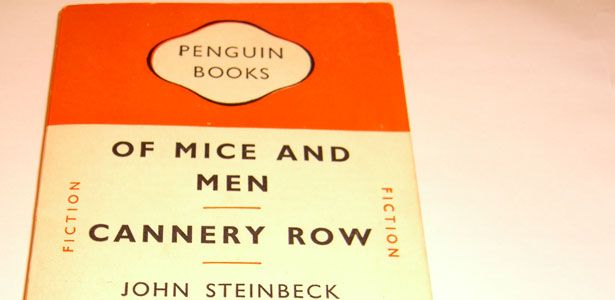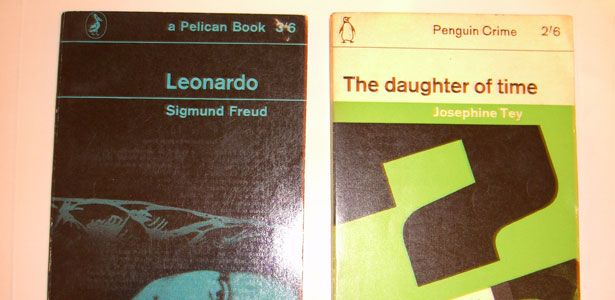Penguins in Perth
When Emma and I were in Perth, more specifically Fremantle, on a ‘find a pair of decent flip-flops’ mission, we happened upon a small second-hand book store. Normally, I tend to walk past second hand book shops (as they’re usually crammed full of Mills and Boon’s), but something caught my eye with this one. Shelves and shelves of second hand Penguin books dating back to the 1940’s. I couldn’t resist.
For those who attended the panel I was on at South By South West this year, Traditional Design and New Technology, you may recall me mentioning a book on the history of Penguin Book cover design, called Penguin By Design by Phil Baines. It’s a wonderful book, and currently selling for a little over a tenner, I’d say it’s a must for any graphic designer. Anyway, back to the book store…
Emma was very patient (as usual!), as I cooed over the various designs and then decided on my three purchases. I could have bought a lot more, but as it was we were both over weight with our baggage and British Airways are harsh when it comes to overweight bags.
In the end, I settled on three books to begin my collection:
The horizontal grid
The first book sports the classic Penguin cover design which first appeared in 1935. The design was created by Edward Young, who became the company’s first Production Manager. Young devised a system of colours to indicate subject matter - orange for fiction, green for crime, dark blue for biography, pink for travel and adventure and red for plays. These aspects of the design, as Baines points out, far outlasted this design.

Horizontal grid designed by Edward Young in 1935. A design classic.
I’m sure you’ll agree, the typography is indicative of the period and the use of Gill Sans, as I wrote a while ago, gives the Penguin books a quintasentially British feel.
It was a bonus that the shop happened to have a copy of ‘Of Mice and Men’, one of my favourite short stories.
Redesigned Pelicans
This book belonged, I think, to my wife’s grandfather (although it may be my mother-in-law’s), but in any case it’s a classic. Not only the subject, which if you live in Wales like myself, even today is a good start into understanding the rich culture of this nation, but the design is a classic.

Redesigned Pelican cover. Designed in 1949 by Jan Tschichold.
Begun in 1949 by Jan Tschichold, the cover design was a departure from the horizontal grid. As shown here the central panel was normally purely typographic, but sometimes there would be the odd woodcut illustration. For me, what defines these early Pelican books is the colour. The Teal, white and black colourway (although working under huge budget and technical constraints), work incredibly well and stand the test of time.
The Marber Grid, 1962
These are beautiful book covers, and apparently quite rare when compared to the other books. Maybe it’s something about Perth’s isolation which meant that these books were kept out of the hands of collectors, but I was lucky enough to pick a couple up (there were only about half a dozen of each in the shop compared to hundreds of the other designs).

I really couldn’t resist these. Beautiful grid design, typography and illustration. (Apologies for the flash)
The Marber grid was designed in 1962 by Romek Marber after being commissioned by Penguin. He went on to design over seventy covers.
The colourways devised by Young in the 40’s were retained by Marber (although slightly tweaked). Shown here is a green crime book and a blue biography.
The typography and grid are perhaps the most striking of these designs. Marber used Intertype Standard (a version of Akzidenz Grotesk) for all the typography as it offered more flexibility in terms of weights compared to typefaces such as Helvetica. The Swiss influence in the design in interesting. I feel, although they are beautiful covers, that the Penguin books of this time lost their ‘Britishness’. A move over to a more European design aesthetic would obviously help sales into the Eurpoean market. However, I can’t help feeling that some of the Penguin brand was lost in the translation.
The beginning of a rather sad hobby?
It would be very tempting to get more of these books. The design is simply stunning in most Penguin books from the early 40’s right through until the 70’s. I’d like more, but to be honest I just don’t have the room. Maybe I should clear out the shed.
Tags that this post has been filed under.